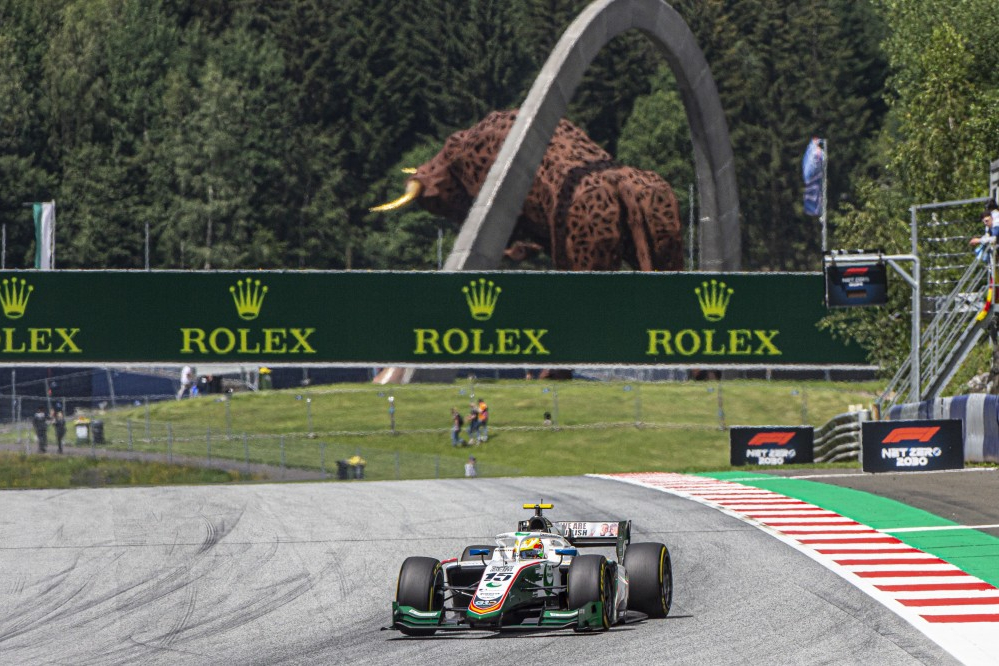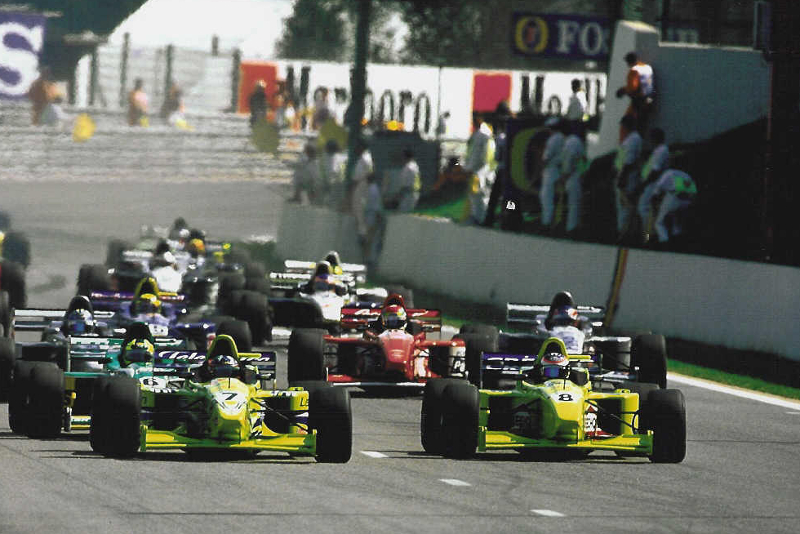
Photo: Campos Racing
Juan Manuel Correa returned to the F2 podium last weekend five years after his previous podium appearance. Who else has waited more than three years between podiums in F1’s primary feeder series?
The vast majority of Formula 2 drivers do not stay in the championship for more than three full seasons, as their chances of making it to Formula 1 are unlikely to improve with a fourth campaign and convincing their sponsors to fund their lack of career progress can be very difficult. But some have raced in F1’s primary feeder series over the course of half a decade or more, and there are 10 drivers who waited three years or even longer between top-three finishes.
Three-time F1 world champion Jack Brabham finished seond in Austria’s Flugplatzrennen (Airfield Race) in the inaugural European F2 season in 1967, then three seasons (and 1,156 days) later contested the same race and was second again in the first of two heats that decided the overall winner.
Peter Gethin came 12th in an incomplete European F2 campaign in 1968, and after a few years as a McLaren F1 driver decided to return to junior single-seaters in 1972 as a factory Chevron driver. He had finished third in 1968’s season-closing Rome Grand Prix at Vallelunga, and 1,287 days later won the Pau Grand Prix.
Roberto Merhi was looking for a way back into F1 when he joined MP Motorsport for the 2018 F2 season, and despite making the podium in the Monaco feature race he did not see out the year with the team and later joined Campos Racing who he made the podium with in the season finale at Yas Marina Circuit. He returned to F2, Campos and the podium halfway through 2022, finishing third in the Red Bull Ring feature race on his comeback weekend 1,324 days after his last podium.
Jochen Mass had more than proven himself in F2 and F1, having been European championship runner-up in the former in 1973 and winning for McLaren in the latter in ’75, when he made a two-round return to European F2 in 1977 to contest his home races in Germany with March. He won the Germany Trophy at Hockenheim (1,330 days on from his last podium), then was victorious in the Nurburgring’s Eifelrennen race too.

Photo: Goossens & team-mate Fernando Alonso
After two seasons in a row of coming third in International Formula 3000, Marc Goossens headed to Super Formula for 1997 to achieve his dream of becoming a professional racing driver but he mostly struggled in the Japanese series. He failed to score as a rookie, and in his sophomore campaign he did make the podium but was more prone to retiring. To keep his single-seater career going he stepped back down to Int. F3000 in 1999, but had a points-free season there too.
In 2000 he landed a seat at Team Astromega for the last four rounds, and after setting the fastest lap in the penultimate race at the Hungaroring he ended a 1,443-day wait for an F3000 podium in the Spa-Francorchamps finale by finishing second.
5. Jean-Pierre Beltoise FRANCE 1,590 days
Beltoise made the podium three times in the inaugural European F2 season, and was champion in 1968 with three wins. Thereon he was ineligible for points as a graded driver (as the likes of Brabham was too), but he stil contested most of the 1969 season and claimed a win and three other podiums. His outings over the four years following that were far less successful, and by 1973 he was eligible for points again. In his first four rounds he took two poles and a fastest lap, but also failed to qualify for one race and didn’t finish the others. He returned to the paddock for the Albi Grand Prix late in the season, and finished a few seconds behind the winner in third, with the fastest lap to boot too.
4. Jean-Pierre Jarier FRANCE 1,667 days
A two-time podium-finisher in 1971 and then European F2 champion in ’73, Jarier spent his next years toiling away in the F1 midfield with Shadow. He decided to do two F2 rounds in 1977, then four the year after as his F1 commitments downscaled. He reminded everyone of his talents by finishing third in the Germany Trophy, and landed himself a Tyrrell F1 seat for 1979 that resulted in two podiums and a career-best 11th in the standings.
3. Juan Manuel Correa ECUADOR 1,828 days

Photo by Jerry Andre / LAT Images
The Charouz Racing System team had impressed in its first F2 season in 2018, but the arrival of a new car the year after presented another big challenge to the team and its rookie driver Correa. He finished 16th on debut, then in the second round in Baku surprised by coming from 17th on the grid to finish seventh in the feature race. That put him second on the sprint race grid, and he held his position to take a maiden podium. Four more non-scores followed, then at Paul Ricard he had a similar weekend to Baku as he converted 12th on the grid into seventh in the feature race, and was sprint race runner-up.
But then another six non-scores followed before his racing career almost came to an end as he was involved in the horrific accident at Spa-Francorchamps that claimed the life of Anthoine Hubert and broke Correa’s legs and spine. He returned to racing in 2021 via FIA Formula 3, then stepped back up to F2 at the end of 2022. The 24-year-old has been there ever since, and after a track limits penalty cost him a sprint race podium last Saturday he made up for it by coming from eighth on the grid to finish third in the feature race.
2. John Surtees ENGLAND 1,919 days
Surtees entered eight European F2 rounds: four in 1967 and four in 1972. He was a factory Lola driver, and already an F1 world champion, when he had his first go at the championship and he finished third in Silverstone’s BARC 200 then was Eifelrennen runner-up. He failed to qualify for the Guards’ Trophy at Brands Hatch, and five years later also failed to qualify for the London Trophy around Crystal Palace and Rouen’s grand prix. This time he was in his own Surtees TS10 car.
A month later he won Imola’s grand prix, which was one of his last ever races in contemporary single-seaters.
1. Lamberto Leoni ITALY 2,851 days
Any F1 fans will know Leoni for failing to qualify for the 1977 Italian Grand Prix while driving for Surtees, then a year later failing to qualify for two races after being signed by Ensign. He did qualify for the Brazilian Grand Prix, but transmission issues meant he could not race, and so his sole F1 start was in the Argentinian Grand Prix where his engine gave up 29 laps in.
But before reaching F1, Leoni had shown the potential to be a racing star. He finished third on his European F2 debut in 1975’s season-opening Estoril Grand Prix, but failed to score through the rest of that campaign. In 1977 he had three DNQs, but once he switched to a more competitive team he ended up winning the Adriatic Grand Prix at Misano.
With his F1 career going nowhere, Leoni made further F2 outings in 1979, 1982, ’83 and ’84, with pole position for the 1983 German Trophy being his next highlight in the championship.
European F2 was succeeded by Int. F3000 in 1985, and Leoni stayed in the paddock. That year he made the podium with two different teams, and his third place finish in the Pau GP came almost eight years after his Misano win. Three months later, and after switching from PMC Motorsport to Corbari Italia, he took another third place at the track now known as the Red Bull RIng.
Leoni did two more Int. F300 seasons after that, but came agnosingly short of any more podiums as he finished fourth in the last three races of 1987.